Tomatoes are one of the most rewarding plants you can grow at home. Whether you cultivate them in your backyard, on a balcony, or in a greenhouse, nothing beats the satisfaction of picking fresh, juicy tomatoes straight off the vine. However, achieving bigger harvests requires more than just planting seeds and watering them regularly. One of the most effective techniques for boosting tomato yields is pruning.
Pruning tomato plants not only helps in controlling their growth but also ensures better airflow, stronger stems, and increased fruit production. Many beginner gardeners often overlook this essential practice, resulting in smaller or fewer tomatoes. In this guide, we’ll take a deep dive into why pruning matters, the different methods, step-by-step instructions, and expert tips for keeping your tomato plants thriving throughout the season.
Why Pruning Tomato Plants Is Important
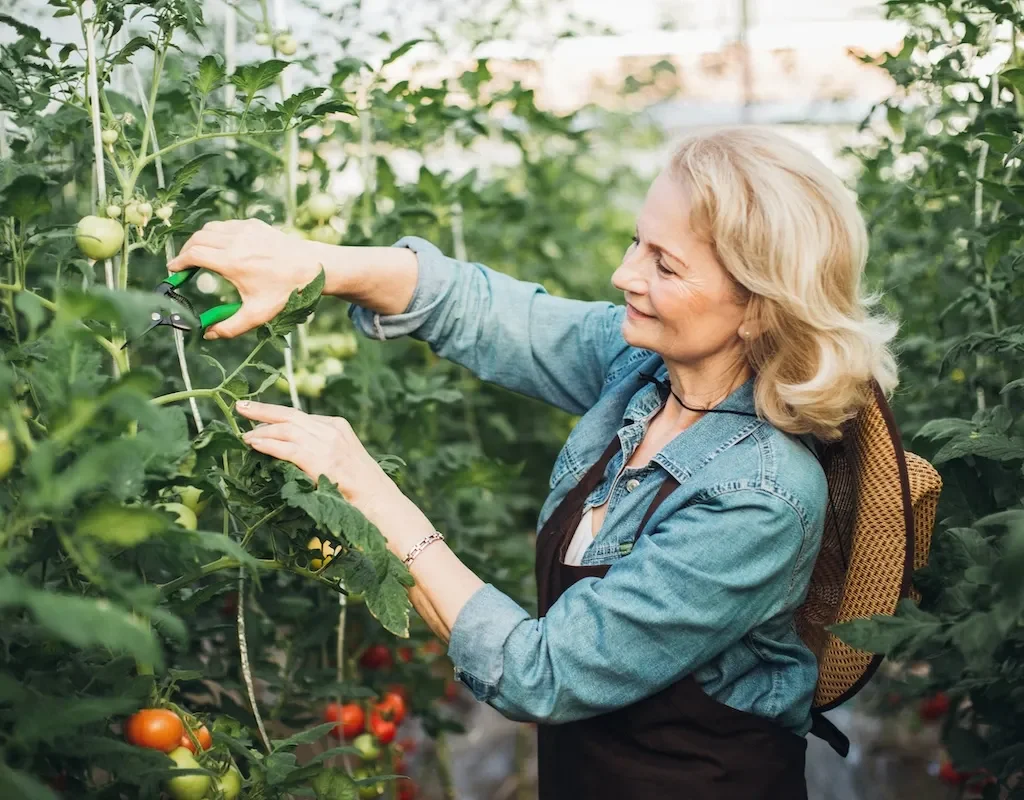
Pruning plays a vital role in the health and productivity of tomato plants. Here are the main reasons you should never skip it:
- Improves Air Circulation
Removing unnecessary leaves and stems reduces overcrowding. This allows more airflow between branches, keeping the plant drier and preventing fungal diseases like blight. - Prevents Energy Waste
Tomato plants are vigorous growers. Without pruning, they spend too much energy growing extra leaves and suckers instead of focusing on producing larger fruits. - Increases Sunlight Exposure
Pruning exposes developing fruits to sunlight, which improves ripening and enhances flavor. - Encourages Stronger Plants
With fewer competing branches, the plant strengthens its main stems, resulting in sturdier plants that can support heavy fruit loads. - Leads to Bigger Harvests
When the plant channels its energy into fewer, healthier fruits, you’ll notice not only bigger tomatoes but often a higher yield overall.
Determinate vs. Indeterminate Tomatoes
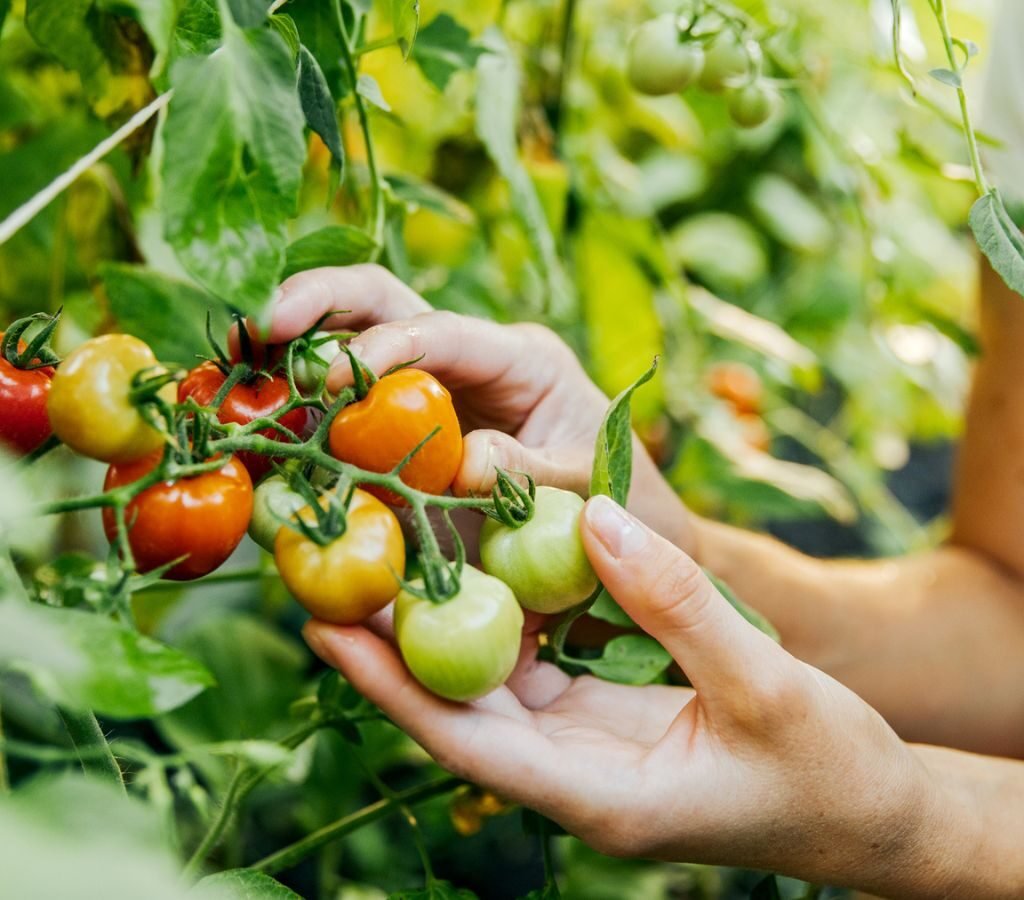
Before you start pruning, it’s important to know what type of tomato plant you’re growing:
- Determinate Tomatoes (Bush Type):
These grow to a certain height and stop. They produce fruit all at once, usually within a few weeks. Minimal pruning is needed since excessive trimming can reduce yields. - Indeterminate Tomatoes (Vine Type):
These keep growing and producing fruit throughout the season until frost. Pruning is crucial for managing their size, improving air circulation, and maximizing harvests.
Most pruning techniques are applied to indeterminate varieties, as they require more maintenance to stay productive.
Tools You’ll Need for Pruning
Pruning is simple, but having the right tools makes the process safer and more effective:
- Clean, sharp pruning shears
- Gardening gloves
- A small hand sanitizer spray (to disinfect tools between cuts and prevent disease spread)
- Stakes, trellises, or tomato cages for plant support
Step-by-Step Guide to Pruning Tomato Plants
Here’s a practical guide you can follow throughout the growing season:
Step 1: Identify the Suckers
- Suckers are small shoots that grow between the main stem and a branch, forming in the “V” or crotch of the plant.
- If left unchecked, these suckers grow into full stems, making the plant bushier and less productive.
Step 2: Remove Suckers Early
- Pinch off small suckers by hand when they are 2–4 inches long.
- For larger suckers, use clean pruning shears to avoid tearing the plant.
Step 3: Focus on the Lower Leaves
- Remove the lower leaves near the base of the plant as they often touch the soil and can attract pests or diseases.
- This also increases airflow around the plant base.
Step 4: Thin Out Excess Foliage
- Don’t over-prune, but thin out overcrowded areas so sunlight can reach the developing fruits.
- Keep the top leaves intact since they provide essential photosynthesis for fruit growth.
Step 5: Support the Plant
- Tie the main stem to a stake or secure it with a tomato cage.
- Proper support prevents branches from snapping under the weight of heavy fruit clusters.
Step 6: Continue Throughout the Season
- Pruning is not a one-time task—it’s a continuous process.
- Check your plants every few days for new suckers and diseased leaves.
Common Mistakes to Avoid While Pruning
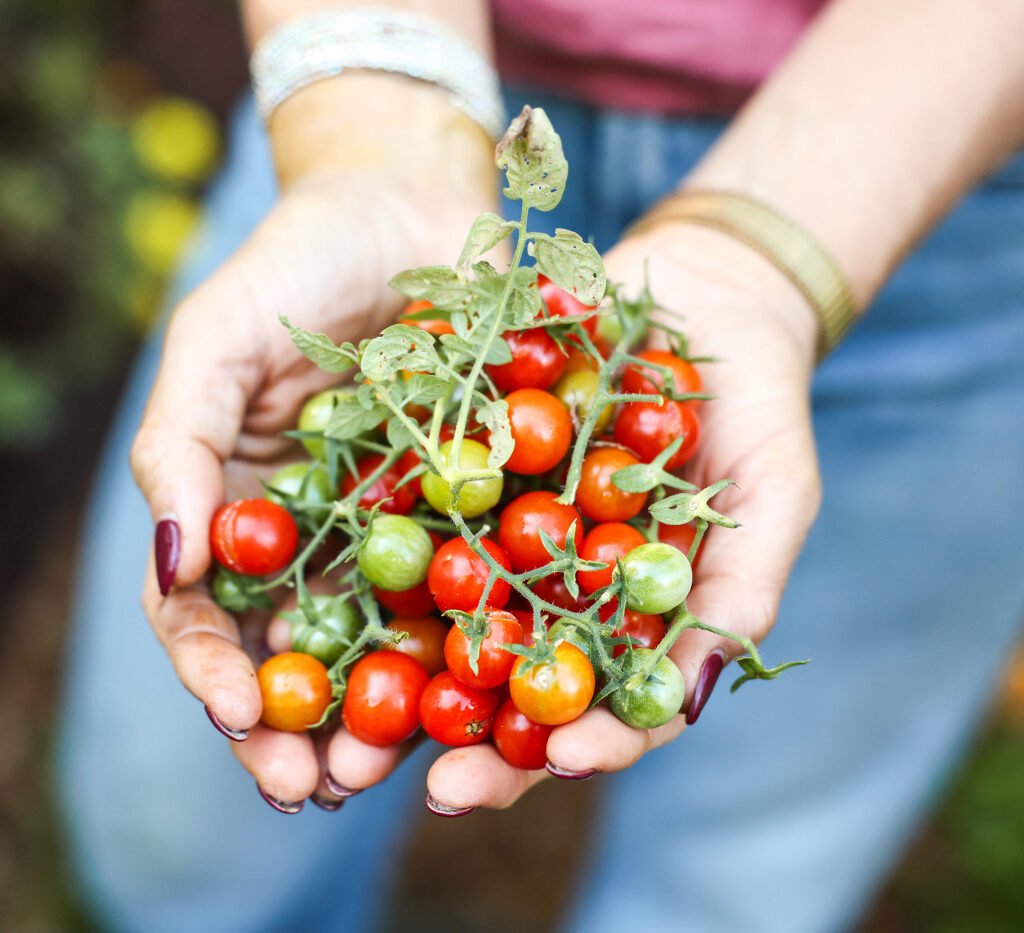
Even experienced gardeners sometimes make mistakes. Here are a few to watch out for:
- Over-Pruning – Removing too many leaves can stress the plant and reduce its ability to photosynthesize.
- Pruning at the Wrong Time – Avoid pruning during very hot afternoons as it can cause sunscald. Early morning is the best time.
- Leaving Large Wounds – Always use sharp tools to make clean cuts and reduce the risk of infection.
- Neglecting Tool Hygiene – Dirty tools spread disease from one plant to another. Always disinfect before pruning a new plant.
Benefits of Pruning Tomato Plants
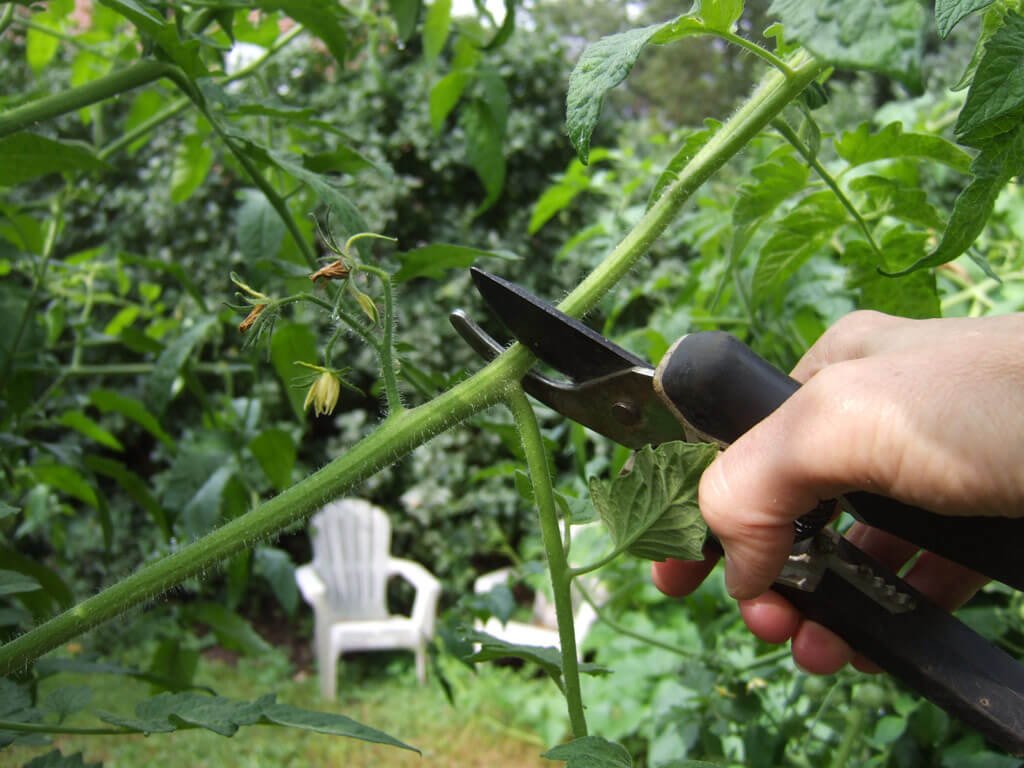
To recap, here’s what you gain by making pruning a part of your gardening routine:
- Stronger stems that carry more fruit
- Healthier plants with fewer diseases
- Bigger, juicier tomatoes
- Easier harvesting and maintenance
- A neater and more manageable garden
Advanced Pruning Tips for Bigger Harvests
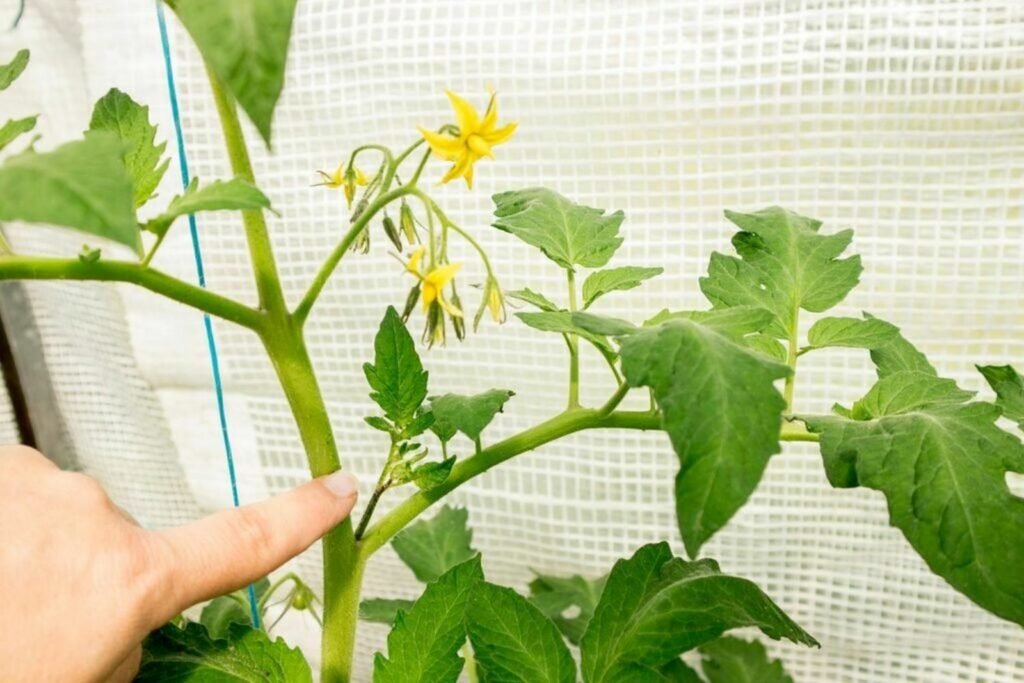
If you want to take your tomato pruning skills to the next level, try these additional techniques:
- Single Stem Pruning
Train your tomato plant to grow on one main stem by removing all side suckers. This is especially useful in small spaces or greenhouses. - Two-Stem Pruning
Keep one sucker just below the first flower cluster and train it as a second main stem. This gives you a balance of plant size and productivity. - Topping the Plant
Toward the end of the season, cut off the growing tips of the plant. This stops it from producing new leaves and directs energy to ripening existing fruits. - Mulching After Pruning
Once you prune, apply mulch around the plant base. This protects the exposed soil, retains moisture, and prevents disease spores from splashing onto leaves.
Frequently Asked Questions
1. Can you prune determinate tomato plants?
Light pruning is fine—just remove yellowing leaves or those touching the soil. Heavy pruning may reduce their overall yield.
2. How often should you prune tomato plants?
Check them once a week during the growing season. Suckers can grow quickly, so regular maintenance is key.
3. Can pruning harm tomato plants?
Not if done correctly. Avoid removing more than one-third of the plant at once to prevent stress.
4. Does pruning really increase tomato yield?
Yes! By focusing the plant’s energy on fewer, healthier fruits, you’ll get bigger, tastier tomatoes.
Conclusion
Pruning tomato plants might seem intimidating at first, but once you learn the basics, it becomes second nature. It’s one of the simplest ways to boost yields, prevent diseases, and enjoy bigger, juicier harvests. Whether you’re growing indeterminate varieties that need frequent attention or determinate types that need only light trimming, pruning is an essential skill for every gardener.
By identifying suckers early, removing lower leaves, and keeping your plants well-supported, you’ll be rewarded with a garden full of vibrant tomato plants that produce delicious fruits all season long. With patience, care, and the right pruning strategy, you’ll never look at your tomato harvest the same way again!
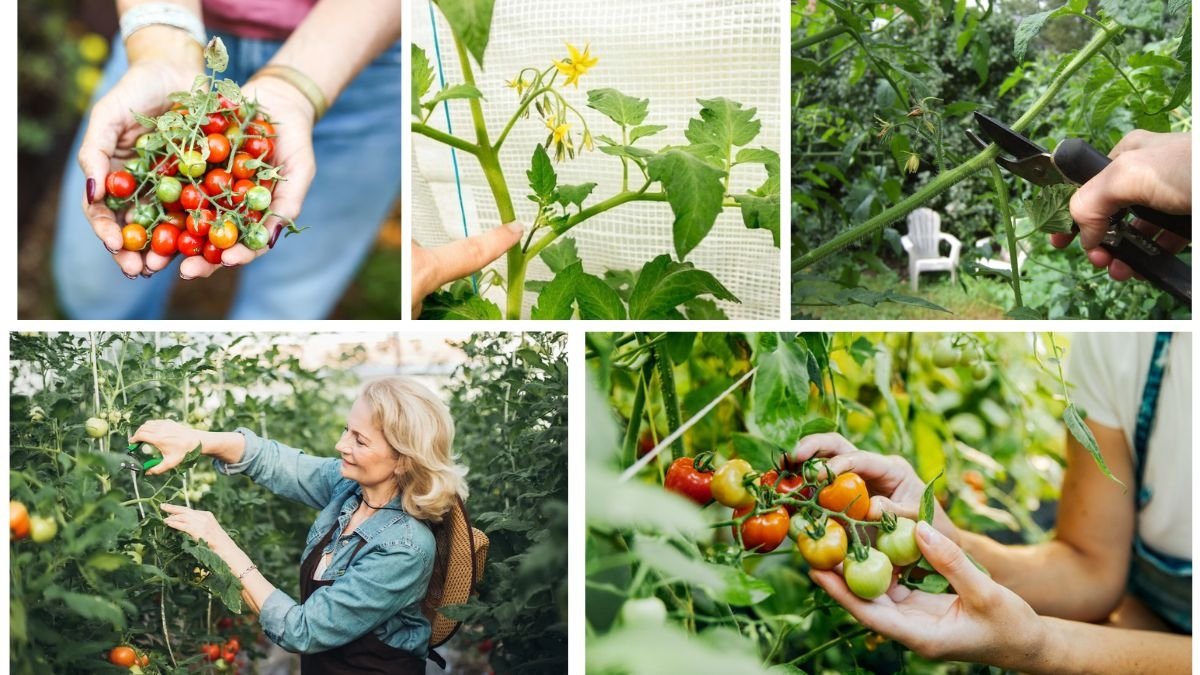





Leave A Comment